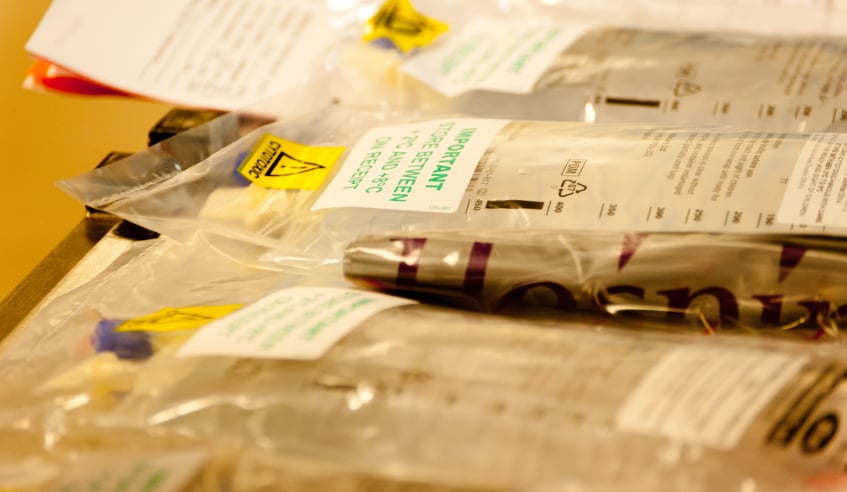
We were the first in Europe to develop chemotherapeutic agents, and we discovered, and with The Royal Marsden NHS Foundation Trust developed, the chemotherapy drugs busulfan, chlorambucil, melphalan and carboplatin, which are still in use worldwide more than 50 years later.
The Institute of Cancer Research played a crucial role in the development of alkylating agents and cisplatins – two important classes of chemotherapy agents which are still in wide spread use today.
Tumour reduction
In the 1950s we began work on a family of chemotherapy agents, based on work conducted at Yale University on nitrogen mustard, a derivative of mustard gas. The Yale researchers had found it to reduce the size of tumours in mice, and early tests in patients seemed to confirm the effects, highlighting the potential for chemicals to be used as a therapy for the first time.
During the 1950s scientists here at the ICR altered the chemistry of nitrogen mustard, producing derivatives that had anti-cancer properties but were more effectively taken up into tumour cells.
ICR researchers first discovered melphalan and chlorambucil. Based on their structures they then discovered busulphan, another important anti-cancer drug not derived from nitrogen mustard but with similar chemical properties.
Triggering cell death
Melphalan, chlorambucil and busulphan form a class of compounds known as alkylating agents. Later, in the 1960s, Professors Philip Lawley and Peter Brookes would demonstrate that these drugs worked by chemically bonding to DNA, stopping it from replicating, and triggering programmed cell death.
For 20 years these alkylating agents were among the most important chemotherapy drugs available, and they are still used today for cancers that are resistant to newer targeted therapies.
The ICR also played an important role in the discovery and development of the cisplatins. Cisplatin itself was originally discovered in 1965 by a research team at Michigan University. Researchers at the ICR took a great interest as the structure of cisplatin suggested that it probably acted in a similar manner to the alkylating agents, as was later confirmed.
ICR researchers went to Michigan to meet Dr Barnett Rosenberg who led this work, forming an important collaboration.
The ICR took the lead with The Royal Marsden in clinical trials of cisplatin, which were performed in the UK and found it to be effective for treating several kinds of cancer. It received market approval in the 1970s, but it had severe side-effects.
Carboplatin discovered
ICR scientists including Dr Tom Connors and Dr Ken Harrap went on to test around 300 derivatives of cisplatin throughout the 1970s to see if they could produce a milder form, leading to the discovery of carboplatin - an extremely effective anti-cancer drug but with dramatically reduced side-effects.
The ICR, together with The Royal Marsden and the Johnson Matthey Technology Centre, received the Queen’s Award for Technological Achievement in 1991 for this work.
Carboplatin and cisplatin are among the most important breakthroughs in cancer chemotherapy and both still play an important part in cancer treatment.
References
Haddow et al., (1953) Myleran in chronic myeloid leukæmia chemical constitution and biological action, Lancet, 261, 207-08
doi:10.1016/S0140-6736(53)90884-8
Everett et al., (1953) Aryl-2-halogenoalkylamines. Part XII. Some carboxylic derivatives of NN-di-2-chloroethylaniline, J Chem Soc 2386-92
DOI: 10.1039/JR9530002386
Bergel and Stock, (1954) Cyto-active amino-acid and peptide derivatives. Part I. Substituted phenylalanines, J Chem Soc, 2409-17
DOI: 10.1039/JR9540002409